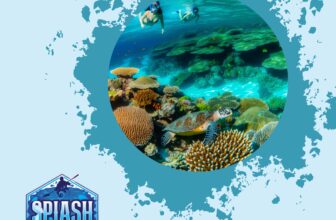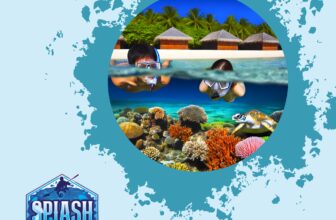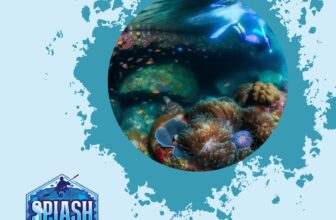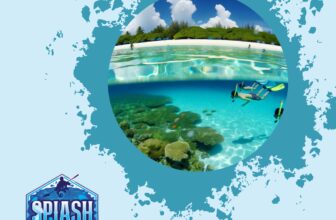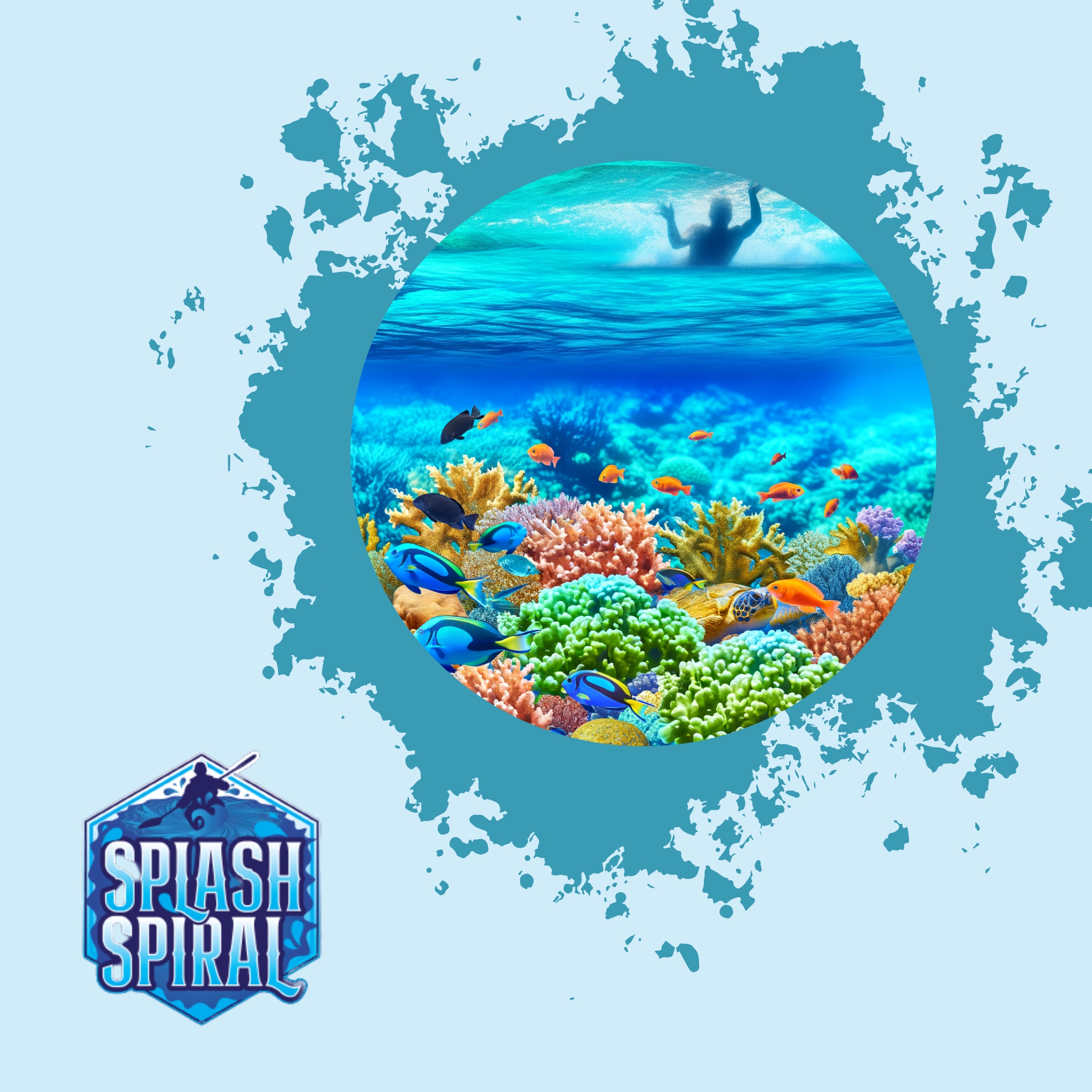
Snorkeling is a fantastic way to explore the underwater world without the need for complex equipment or extensive training. Whether you’re a beginner or someone looking to start snorkeling, having the right gear is essential for a safe and enjoyable experience. In this guide, we’ll break down the essential equipment and give you a straightforward snorkeling gear checklist to ensure you're fully prepared for your next snorkeling adventure.
Why Proper Snorkeling Gear is Essential
Diving into the world of snorkeling starts with having the right gear. It's not just about having fancy equipment—it's about safety and comfort. Here's why choosing the right equipment is crucial:
Essential Components of Snorkeling Gear
- Snorkel Mask:
- Ensures clear vision underwater
- Provides a good seal to keep water out of your eyes and nose
- Snorkel:
- Allows you to breathe easily as you glide along the ocean's surface
- Fins:
- Help you move efficiently, saving energy
- Snorkeling Vest:
- Adds an extra layer of safety
- Keeps you buoyant in deeper waters
Enhancing Your Experience
Proper gear isn't just about ticking off items on a checklist; it's about enhancing your experience. Here's how good equipment can improve your snorkeling adventure:
- Lets you relax and fully immerse yourself in the underwater world
- Keeps you safe so you can simply enjoy the stunning scenes beneath the waves
Whether you're spotting colorful coral or following a school of fish, having the right gear is the first step to a perfect snorkeling adventure.
Snorkeling Gear Checklist: Must-Have Items
Masks
First things first, you need a good mask. A quality snorkel mask is your key to seeing the underwater world clearly. It should fit snugly without being too tight. Check for leaks by doing a quick "suction test": place the mask on your face without using the strap, inhale slightly through your nose, and see if it stays put. If it does, you’re good to go. Look for masks with tempered glass lenses and a silicone skirt for a comfortable fit.
Snorkels
Your snorkel is how you'll breathe while face-down in the water. Simple but essential. There are a few types: classic, semi-dry, and dry. Beginners might opt for a dry snorkel, which keeps water out even if you dive underwater briefly. It’s about finding what suits your style. Aim for something with a flexible mouthpiece for added comfort.
Fins
Fins give you that extra boost to move efficiently in water, saving you energy and helping you glide smoothly. For beginners, short, flexible fins are easier to manage and transport. Make sure they fit well – not too tight to cause cramps, but snug enough to stay on without slipping.
Snorkeling Vest
Safety first, folks. A snorkeling vest helps with buoyancy, making it easier to float and giving you peace of mind. They're lightweight, adjustable, and a smart choice, especially for beginners who are getting used to open water.
Reef-Safe Sunscreen
It’s sunscreen, but kinder to the ocean. Reef-safe sunscreen helps protect marine life by using ingredients that aren't harmful to coral reefs. Look for labels that say "reef-safe" or "biodegradable." Slather it on 15 minutes before hitting the water to give it time to absorb.
This checklist covers the basics you need for a safe and fun snorkeling trip. With these essentials in your gear bag, you’re set to explore the underwater wonders with confidence.
Optional But Useful Gear
While the essentials will get you started, adding a few optional items to your gear list can elevate your snorkeling experience from great to unforgettable.
Underwater Camera
Capturing the vibrant colors and unique marine life is an incredible way to relive your snorkeling adventures. A waterproof camera or a durable camera case for your smartphone allows you to document the underwater world. Look for options that offer good image quality, are easy to use, and are truly waterproof. For beginners, a simple action camera will do the trick without breaking the bank.
Rash Guards and Wetsuits
If you're planning to snorkel for extended periods or in cooler waters, consider wearing a rash guard or wetsuit. Rash guards offer a layer of protection against sunburns and potential irritants like coral or jellyfish. Wetsuits, on the other hand, provide thermal insulation to keep you warm in cooler climates. Choose what suits the environment and your comfort level.
Dive Watch
A dive watch might seem excessive, but it's a handy tool once you find your rhythm in the water. These watches help you keep track of time, ensuring you don’t overstay in the water and miss the tide changes or your next schedule. Basic models are perfect for beginners, providing just enough functionality to enhance your snorkeling trips without overwhelming you with features.
Preparing for Your Snorkeling Adventure
Getting ready for a snorkeling trip is more than just packing your gear—it's about ensuring a safe and enjoyable experience. Start by checking the weather and water conditions. Look for clear skies, calm seas, and moderate tides, as they generally provide the best visibility and safety. Websites or apps offering local weather updates can be handy for this.
Next, pick a snorkeling site that matches your experience level. Beginners should start with easy-access locations with gentle currents and clear water. Research online or consult local snorkeling shops for recommendations.
Before diving in, practice your snorkeling techniques in controlled environments like a swimming pool. Get comfortable with your mask, snorkel, and fins. Practice breathing through the snorkel and clearing it of water, as well as adjusting your mask for a snug fit. This practice helps build confidence and makes the real adventure less intimidating.
Lastly, have a buddy. Snorkeling with a partner isn’t just more fun; it’s a crucial safety measure. Plan your adventure together, agree on a route, and make sure you’re both aware of each other’s abilities and comfort levels. With these preparations in place, you’re set for a fantastic snorkeling trip.
Locating the Best Snorkeling Spots
Finding the perfect snorkeling spot can make all the difference in your underwater adventure. Here are some tips to help you discover the best places to explore:
-
Ask the Locals: When you're visiting a new area, locals often know the hidden gems off the beaten path. Don't hesitate to ask for their recommendations on where to find clear waters and abundant sea life.
-
Check Online Resources: Websites and forums dedicated to snorkeling can offer valuable insights and reviews from fellow snorkelers. Look for spots that are beginner-friendly, with calm waters and vibrant marine ecosystems.
-
Join Snorkeling Tours: Guided tours are a great way to access popular destinations safely and under expert guidance. They often include snorkeling spots that are otherwise difficult to reach and can provide added perks like equipment rental and local insights.
-
Visit Marine Reserves: These protected areas are often teeming with diverse marine life and are usually well-maintained, ensuring a safe and enjoyable experience. Just make sure to follow any rules or guidelines to help preserve these precious ecosystems.
-
Consult Snorkeling Maps: Some regions provide maps highlighting the best snorkeling areas. These maps typically include information on water depth, current conditions, and best times of day to visit.
Remember, each location offers a unique underwater landscape, from colorful reefs to interesting marine creatures. And if you're looking for a bit more challenge, you might consider advanced destinations like the Hawaiian Islands, known for their fantastic snorkeling opportunities. Happy exploring!
Eco-Friendly Snorkeling Practices
When you're out snorkeling, it's crucial to embrace eco-friendly habits to protect the vibrant marine life around you. Here’s how to snorkel responsibly without leaving a negative mark on the environment.
First off, keep your distance from coral reefs and marine creatures. Touching or stepping on corals can damage these delicate structures, which take years to grow. Similarly, interacting too closely with sea life can disrupt their natural behaviors. Stick to observation and enjoy the sight without getting too close.
Avoid collecting souvenirs from the sea. Shells, coral pieces, and marine plants should remain in their natural habitat. Taking them home might be tempting, but it's important to leave the underwater world as you found it for others to enjoy.
Practicing good buoyancy is essential. This means managing how you float and swim in the water to avoid accidentally bumping into coral or stirring up sediment, which can smother marine organisms. Snorkeling vests can help maintain proper buoyancy and reduce your chance of causing harm.
Finally, respect local guidelines and protected areas. Before your trip, research any specific snorkeling rules for the location. Some areas may have restricted zones to preserve certain habitats.
For more information on eco-friendly snorkeling, check out our resources on eco-friendly snorkeling. Remember, the key is to enjoy the underwater world while ensuring it thrives for future generations.
In conclusion, having a complete snorkeling gear checklist is essential for ensuring you'll have a comfortable, safe, and enjoyable underwater adventure. Being prepared with the right equipment not only enhances your experience but also boosts your confidence as you dive into the world of snorkeling. So, take the time to gather your gear, make sure everything fits well, and consider the optional extras that can add value to your trip. Remember, the more prepared you are, the more you'll be able to focus on the beauty and serenity of the underwater world. To dive deeper into the art of snorkeling and discover more about this exciting hobby, check out Splash Spiral's snorkeling guides and diving resources. Happy snorkeling, and may your underwater explorations be as vivid and exhilarating as you've imagined!



